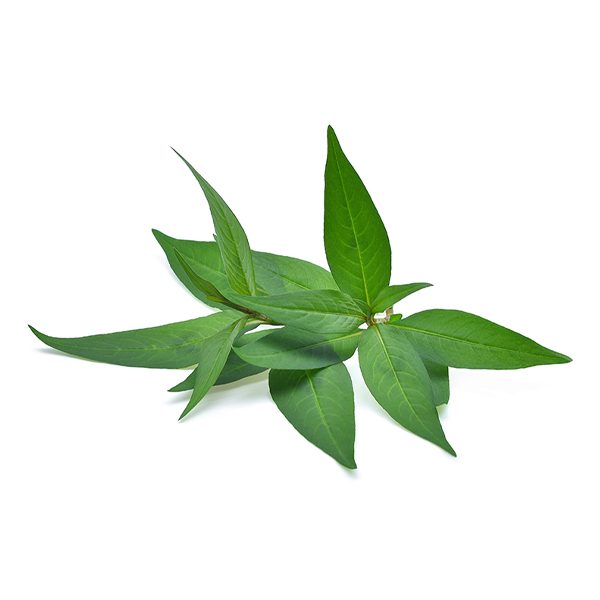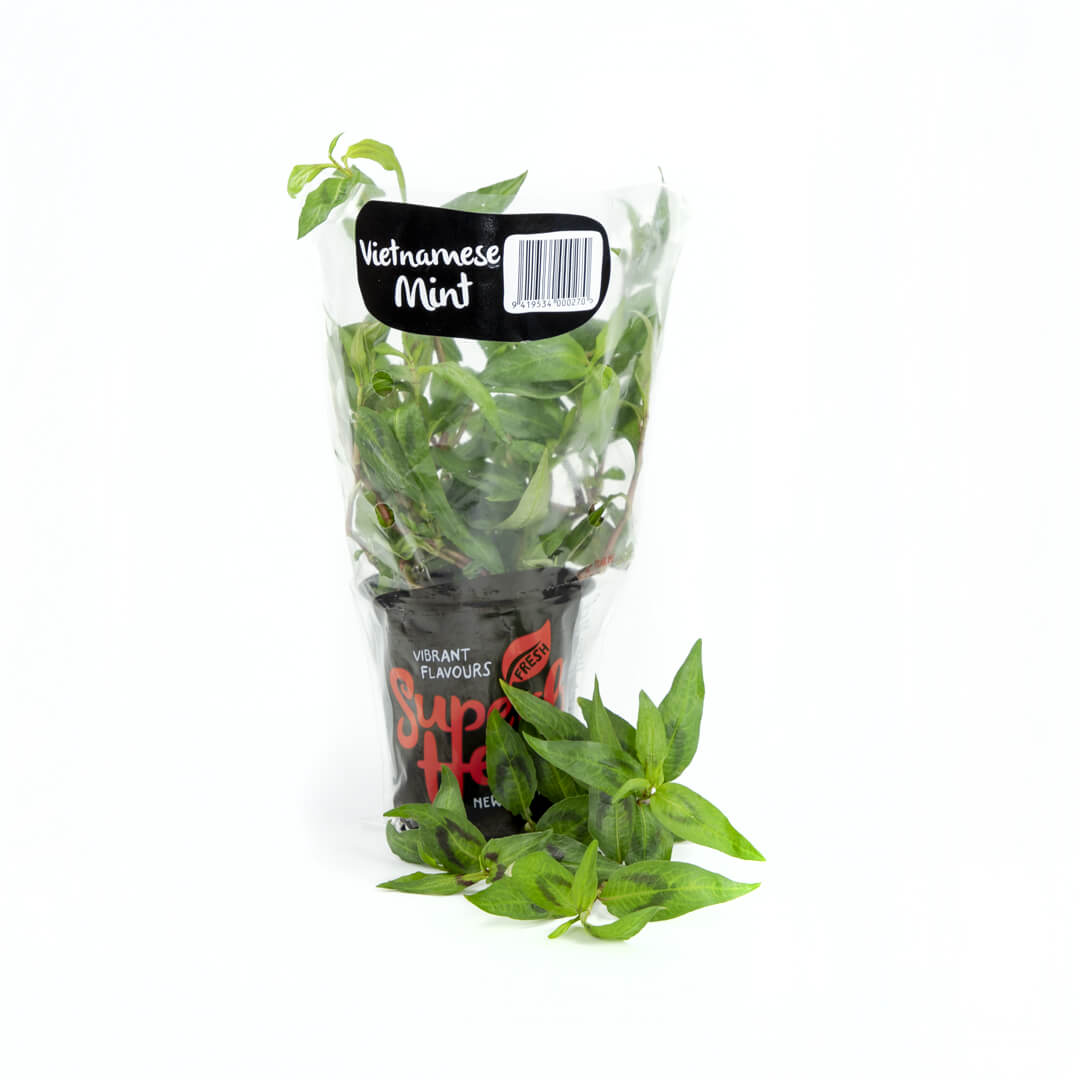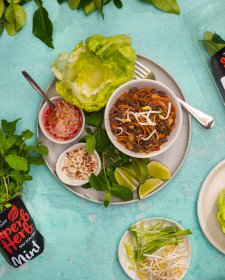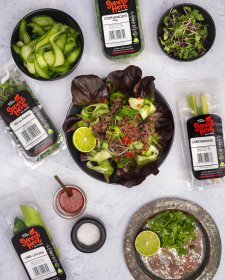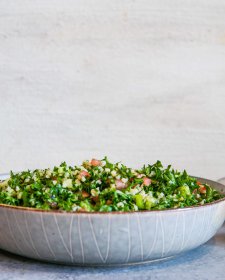Vietnamese Mint
A blend of fresh coriander, lime leaf and green chili- Sorry, this product cannot be purchased.
Did you know?
Vietnamese Mint is also known as Vietnamese Coriander or Hot Mint but is actually not related to the Mint family at all! Its name is due to its general appearance and fragrance, which are reminiscent of mint.
In Southeast Asian cooking, Vietnamese mint is often used interchangeably with mint and coriander.
Vietnamese Mint is great for…
Salads including chicken salad, curries, summer rolls, soups, noodle and duck dishes.
Pairs well with…
- Chicken
- Duck
- Eggs
- Fish
- Beef
- Noodles
Kitchen tips
Vietnamese Mint can take some heat, so throw in your stir-fries or in raw in salads and summer rolls. It is best when consumed young and fresh as older leaves can develop a tough texture and bitter flavour.
Take care of your Vietnamese Mint
Your potted Vietnamese Mint will enjoy a cool spot on your kitchen bench, not in direct sunlight and with plenty of water.
Keep your pack of Vietnamese Mint in the vegetable compartment of your fridge and use within 8 days.
Nutritional facts
There are no nutritional facts known to Vietnamese Mint but its essential oils contain several compounds for aroma and flavours that are known to have anti-bacterial, anti-inflammatory properties.
Health benefits
The reason why this herb is used extensively in soups and salads in South Eastern countries is because it helps solve digestion issues like flatulence, stomach cramps and indigestion. Vietnamese Mint has anti-diarrheal actions as well.
Due to its anti-inflammatory and astringent nature, Vietnamese Mint is used to treat swellings and skin issues like acne and sores. Oils which are derived from the leaves are used for their powerful antioxidant properties. This is one of the powerful herbs that can be used against bacteria such as Escherichia coli.

